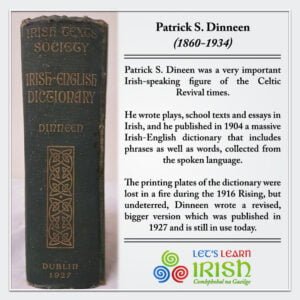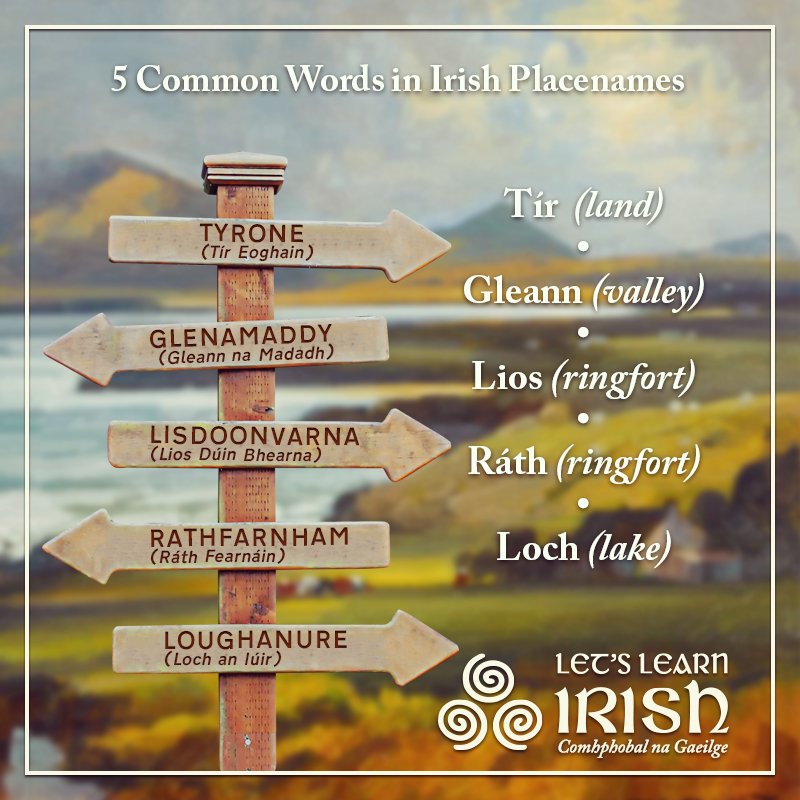Who was Pádraig S. Dinneen?
Cérbh é Dinneen? Who is the person, and what is the story, behind the pioneering Irish-English dictionary?
Early Life

Pádraig S. Dinneen was born on Christmas Day in 1860. He grew up near An Ráth Mhór (‘the big ringfort’) in the Sliabh Luachra district of Co. Kerry.
Dinneen’s parents were native Irish-speakers, and although he was brought up largely through English, Irish played an important role in his childhood. Dinneen obtained a BA in classics and mathematical science, an MA in mathematical science, and was ordained a priest in 1894. He worked as a teacher in a number of Jesuit colleges, including at Clongowes Wood College in Co. Kildare.
Dedication to the Irish language
In 1900, Dinneen left the priesthood in order to devote his life to the study of Irish. His contribution to the Irish language is immense. He established himself as a leading authority on Irish literature, producing editions of poetry focused on important Munster and Bardic poets such as Aogán Ó Rathaille, Eoghan Rua Ó Súilleabháin, Seán Clárach Mac Domhnaill and more. He wrote a novel and a play in Irish, and translated such works as Charles Dickens’ “A Christmas Carol” into Irish. At the time, he claimed he was the only person in Ireland making a living entirely from writing in Irish!
Dinneen is most remembered, however, for the publication of his Irish–English dictionary, “Foclóir Gaedhilge agus Béarla”, first published in 1904. This pioneering work set down a large foundation for the standarisation of written Irish. When the original plates for the first edition were destroyed during the Easter Rising of 1916, Dinneen embarked on a significantly larger second edition, compiled with the assistance of Liam S. Gógan. This edition was published in 1927, and remained the standard Irish–English dictionary until 1977 (when it was largely replaced by Niall Ó Dónaill’s).
A Lasting Contribution
The first and second editions of Dinneen’s dictionary are still held in high regard by students and scholars alike, and are widely consulted. The “Foclóir Gaedhilge agus Béarla” is a useful reference for material published before the advent of today’s official standard Irish, and provides a considerable collection of old proverbs and idiomatic expressions. It is a hefty volume, weighing about 2 kilograms, although you can obtain a PDF copy of it online.
Dinneen died in Dublin at the age of 73, and was buried in Glasnevin Cemetery, Dublin. His contribution has undoubtedly left us with a rich trove of words and sayings in Irish, many of which would otherwise have been lost and forgotten…
Bígí páirteach!
Join the online Irish community at LetsLearnIrish.com.
Follow on social media @LetsLearnIrish.







